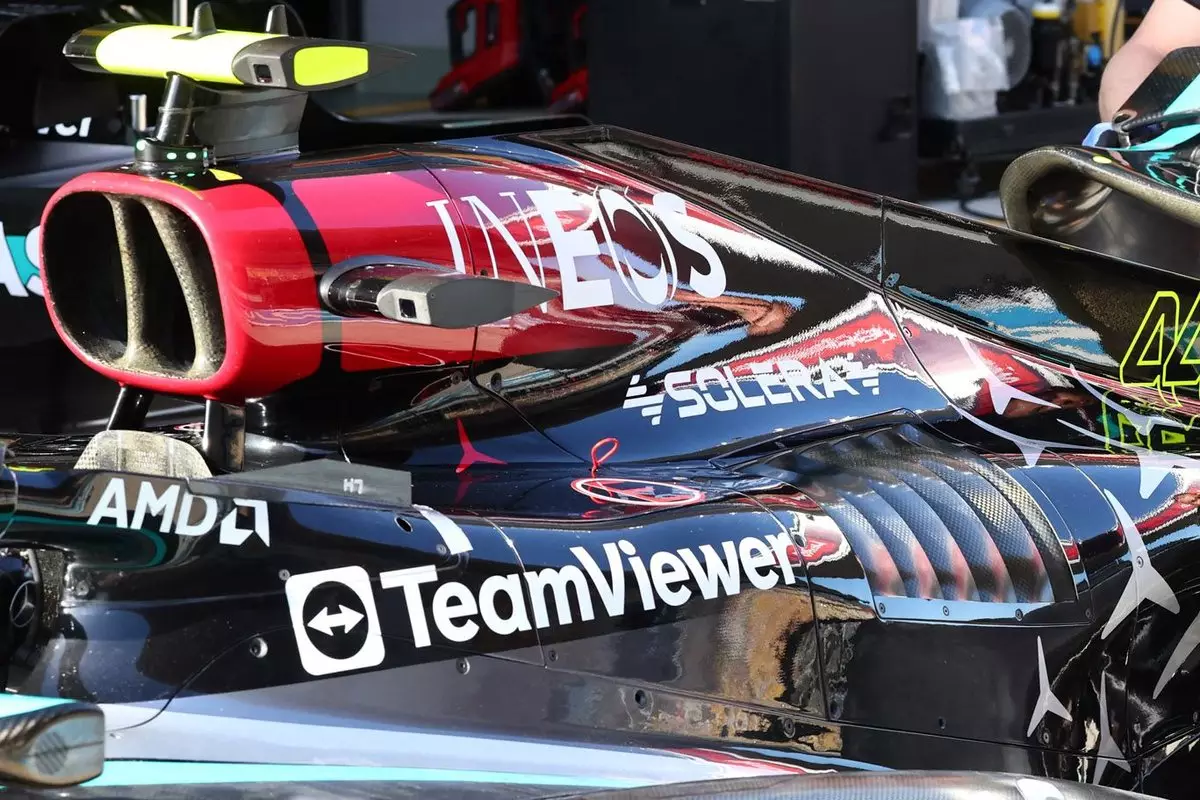In the high-stakes world of Formula 1 racing, teams are constantly striving to gain an edge over their competitors. While major development packages may be rare during sprint race weekends due to limited track time, teams are always looking for ways to improve their performance. Recently, three teams have made significant revisions to the area surrounding the driver and cockpit, highlighting the critical role of aerodynamics in the sport.
One of the teams that have made changes to their car’s aerodynamics is Red Bull Racing. They have reshaped the headrest behind the driver’s helmet to better manage airflow separation in that area. By doing so, they aim to achieve benefits further downstream. This shows the team’s attention to detail and their commitment to optimizing airflow around the car.
Mercedes and Williams have focused on the halo area of their cars to improve aerodynamic performance. Mercedes has added small flicks on either side of the cockpit behind the Halo to generate vortices that help control airflow out of the cockpit. This strategic tweak should enhance airflow towards the rear wing, ultimately boosting aerodynamic efficiency. On the other hand, Williams has adjusted the geometry at the forward part of the halo to increase the angle of attack, resulting in cleaner airflow around the halo and reduced losses in the cockpit area.
According to Williams’ head of vehicle performance, Dave Robson, the cockpit area plays a crucial role in distributing airflow around the car. While the changes made by the teams may seem minor, they are significant in improving aerodynamic performance. Robson highlighted the importance of making incremental changes in aerodynamics and how they can have a meaningful impact on the car’s overall performance. The fact that multiple teams have made changes in this area on the same weekend underscores the significance of aerodynamics in Formula 1 racing.
Robson emphasized that these aerodynamic upgrades are not only about improving performance but also about paying attention to the details that can make a difference on the track. He pointed out that these changes can be made relatively quickly and at a low cost, making them a cost-effective way to enhance the car’s performance. The ability to make these adjustments efficiently demonstrates the teams’ agility and responsiveness to improve their cars throughout the season.
Aerodynamic upgrades play a crucial role in Formula 1 racing, as evidenced by the recent changes made by teams in the cockpit area. These modifications are aimed at optimizing airflow, reducing losses, and ultimately improving the car’s performance on the track. The attention to detail, cost-effectiveness, and quick implementation of these upgrades highlight the competitive nature of the sport and the relentless pursuit of excellence by Formula 1 teams.


Leave a Reply